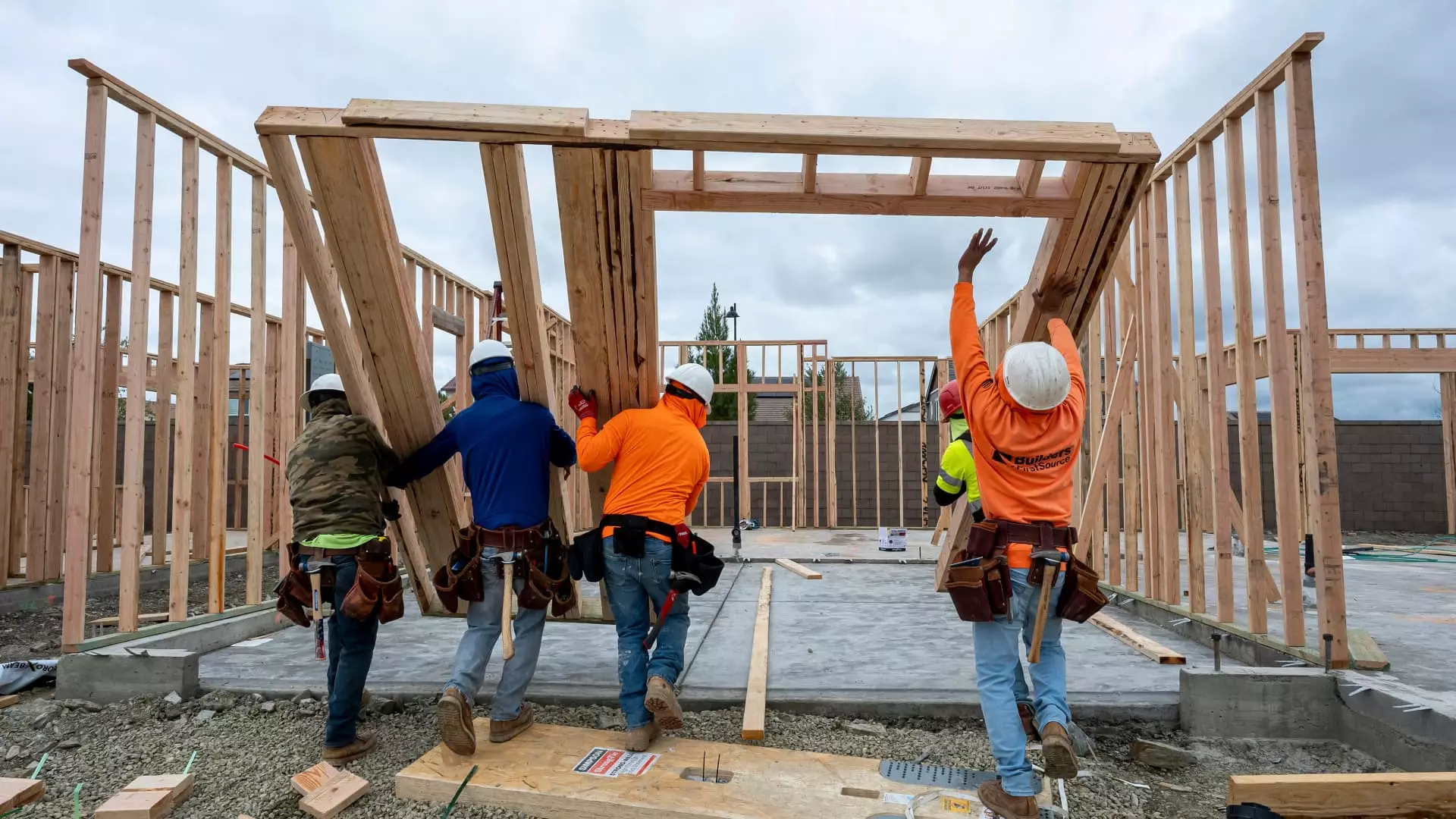The state of homebuilding in the United States is nothing short of alarming. As mortgage rates continue to soar and economic uncertainty looms over the landscape, homebuilders are grappling with an unforeseen drop in builder sentiment. According to the National Association of Home Builders (NAHB) and Wells Fargo Housing Market Index (HMI), June has revealed a troubling 2-point decline in builder confidence, landing at a disheartening 32. This score is particularly significant, as it falls below the crucial threshold of 50, denoting widespread negativity and apprehension in the housing market.
The numbers reflect a stark reality not just for builders, but also for consumers who aspire to own homes. Notably, this isn’t just a seasonal slump; it is indicative of a deeper malaise within the housing sector. With only two lower readings recorded since 2012, this moment begs for scrutiny into what is really fuelling the pessimism. Short-sighted policies and administrative inadequacies appear to be adding to the pressures that builders face, undermining any expectations for improvement amid tariff negotiations and the various economic ripples from past administration choices.
Buyer Exodus and the Market Response
The components of the HMI paint a bleak picture. Current sales conditions have dipped to 35, sales expectations for the next six months have also weakened, and most troublingly, buyer traffic has plunged to 21—the lowest since late 2023. Homebuyers, struggling with escalated mortgage rates and looming economic uncertainties, find themselves in a waiting game, exacerbating the risk of falling prices and excess inventory. Buddy Hughes, the NAHB chair, aptly summarized the sentiment: “Buyers are increasingly moving to the sidelines.” This reflection encapsulates a broader trend where consumer confidence is tied directly to affordability, a concept that seems to be lost in today’s strategic narratives guiding economic policy.
In response to the growing hesitance among buyers, builders have begun slashing prices at unprecedented rates, with 37% reporting price cuts—the most significant share since this metric was first tracked three years ago. The average reduction stands at 5%, further demonstrating that builders are not just pessimistically adjusting their forecasts, but actively mitigating market pressures to lure buyers back to the table. However, this strategy raises serious concerns about the long-term implications of such price cuts on overall market stability.
Regional Disparities and Consequences
Regionally, the sentiment varies significantly, with the South and West exhibiting the weakest builder confidence. These regions not only represent fundamental elements of the American housing landscape, but they also are where most new constructions take place. The decline in sentiment in these crucial markets could foster a ripple effect across the nation, resulting in increasing inventory levels and ultimately leading to potential price derisions, especially for resales. Robert Dietz, NAHB’s chief economist, has indicated a forecast that suggests a decline in single-family home starts for the upcoming year, hinting at a slowdown that could ensnare more aspects of the economy.
The troubling reports also included insights from Lennar, one of the largest homebuilders in the country. Their recent earnings reveal an alarming average price drop of nearly 9% year-on-year, signaling that even the giants of the industry are scrambling to adapt to the harsh realities of the current market. Co-CEO Stuart Miller’s remarks suggest a market desperately trying to create affordable pathways for consumers, yet the sheer volume of these incentives raises questions: how sustainable are these measures, and will they merely defer deeper economic issues?
The Problem of Housing Affordability
At its core, the current crisis is intricately linked to the renouncing of true housing affordability. The increasing difficulty for consumers to enter the housing market is not just about rates but also about a systemic failure to address the macroeconomic landscape effectively. Where governmental strategies falter, the consequences manifest not only in declining builder sentiment but also in a wider social impact where individuals and families are left in limbo, unable to secure homes in an ever-challenging market atmosphere.
As builders struggle to maintain any semblance of optimism, we witness a potential pivot in the American Dream narrative—from homeownership as a symbol of stability to a mirage that slips further away. Reassessing this multidimensional crisis may be a necessary step forward, as it is evident that the current trajectory endangers not only the housing market but also the broader economic wellbeing of the nation.

